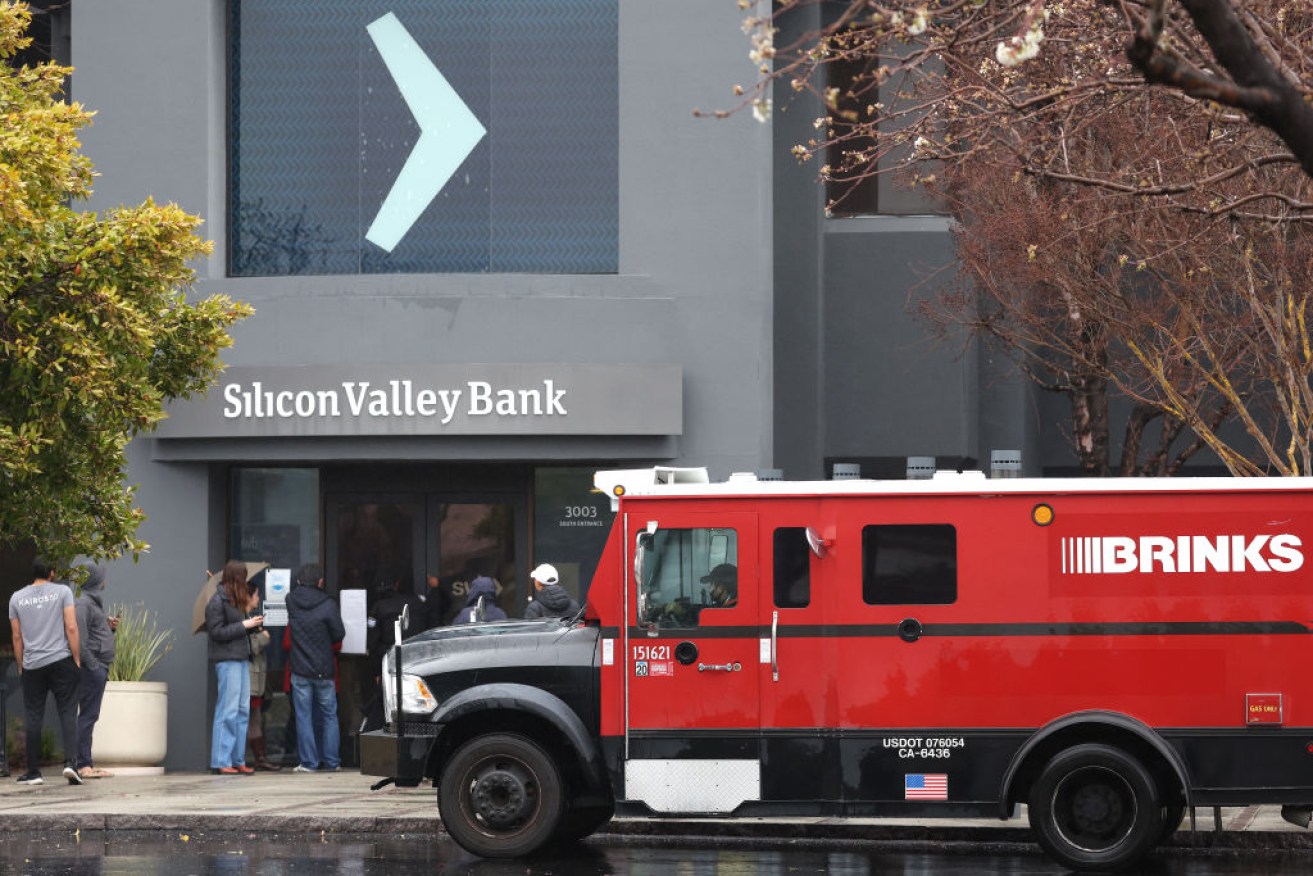Michael Pascoe: Silicon Valley Bank downfall will increase nerves in a precarious sector


The tech sector's pain has finally flowed on to the Silicon Valley Bank. Photo: Getty
People charged with averting disasters often talk of ‘black swans’ – unimagined events that cause havoc.
One such swan dramatically landed over the weekend with the collapse of a Californian bank few Australians have ever heard of.
Silicon Valley Bank (SVB), an institution that specialised in the tech industry, might seem a long way away from Australia, but those of us who watched the GFC unroll can never forget how interconnected financial markets are.
So did the world’s monetary and banking authorities.
Hence the US Treasury, Federal Reserve and Federal Deposit Insurance Corporation (FDIC) came to the rescue of all SVB depositors, not just the officially insured deposits up to $US250,000.
Too big to be allowed to fail
Like Australia, it seems the US has moved to a de facto realisation that all deposit-taking institutions are too big to be allowed to fail.
They can’t risk the reverberations started by one failure rattling other foundations. Bear Stearns collapsed 15 years ago this week – it took another six months for Lehman Brothers to go under and officially start the “Great Recession”.
Like many a black swan, with all the benefit of hindsight, something like the SVB collapse should have been expected.
Wiser heads have been worried that a mountain of unprofitable companies thriving/surviving on free money would cause serious trouble as interest rates rose and money was no longer free.
That realisation has been hurting tech stocks, in particular. The start-ups SVB was famous for funding were finding venture capital harder to come by when it cost real money.
But it is not just the formerly-cool techies at risk.
Any business is in trouble if it has been built on effectively free money and lacks the ability to increase prices when the cost of money rises.
In the rank behind unprofitable start-ups feeling the heat is commercial real estate.
“US commercial real estate could be a big worry for investors because there is more than $US60 billion in fixed-rate loans that will soon require refinancing at higher interest rates,” Share Cafe’s Glenn Dyer reminded readers on Monday.
“Additionally, there is more than $US140 billion in floating rate commercial mortgage-backed securities that will mature in the next two years and which are showing unrealised losses.”
Self-described “old bond dog” Anthony Peters has long reminded readers of the importance of understanding liquidity risk and that what really counts is the ability to actually repay a loan, not just service it.
Writing for Reaction, he explained the FDIC’s move before the institution made it: “Unless the FDIC breaks all its own rules and rides to the rescue of SVB’s depositors, the implication for smaller banks could be catastrophic. When the hordes invade the valley, the peasants flee to [the] fortress on the hill.
“It happened during the Asian crisis at the end of the 1990s when depositors deserted local banks and moved their money to likes of Standard Chartered and HSBC, which they perceived to be much safer and whose cost of funding actually fell.
“The same might happen in the States and the last thing the regulators would want to see would be an implosion of the highly diversified regional banking landscape.
“If it does, however, step up to the plate and save all depositors, then more or less all bank deposits become de facto insured and moral hazard is off to the races.”
Moral hazard
But that moral hazard setting up more failures is further down the track.
SVB threatening the US banking system – and the contagion spreading globally – is now. Hence the cavalry arriving quickly.
Although said cavalry seems to be doing the job, the fright and the warning isn’t disappearing quickly.
It adds another uncertainty for a central bank wondering whether to pause its interest rate hikes. Oh, did someone mention the RBA?
Another (unnecessary in my humble opinion) rate rise here next month just became more unlikely.
Somewhat ironically, it wasn’t SVB’s loans to unprofitable start-ups per se that triggered its demise.
Perhaps recognising their riskiness, SVB loaned a smaller percentage of its deposits to clients than most banks, reportedly just $US74 billion out of deposits of $US173 billion as of December 31.
This was instead of “lending” the balance it “invested” (same difference in the end) in what were supposed to be safer financial assets – government bonds, residential and commercial mortgage-backed securities.
Crucial mistake
The bank’s crucial mistake was that it did not hedge its interest rate exposure.
When its tech firm clients needed to reduce their deposits as their easy venture capital dried up, SVB was forced to sell some of its “investments” at a loss, forcing it to try to raise capital itself.
The bank’s need to raise capital scared its more savvy big depositors into withdrawing their funds – and a run on the bank.
All institutions that bought bonds when rates were excruciatingly low are sitting on large unrealised losses.
As long as they can hold those bonds to maturity and don’t have to mark them to market – SVB did not have to until it did by selling some at a loss – they can look OK.
(Our Reserve Bank marks its $350 billion worth of government bonds to market and thus has wiped out its reserves and would be insolvent if it didn’t have the ability to make money. Nice for some.)
There will be increased nervousness about other institutions managing to skate under mark-to-market requirements the way SVB did.
The American cavalry has contained the SVB black swan, but authorities around the world will be looking more nervously for any signs of others.








